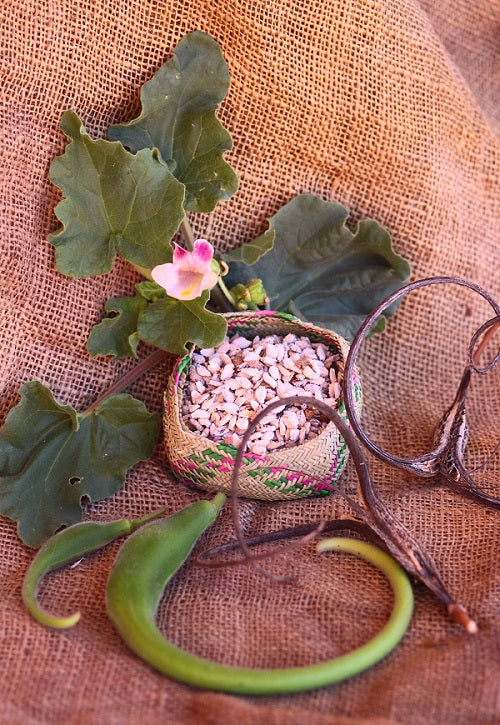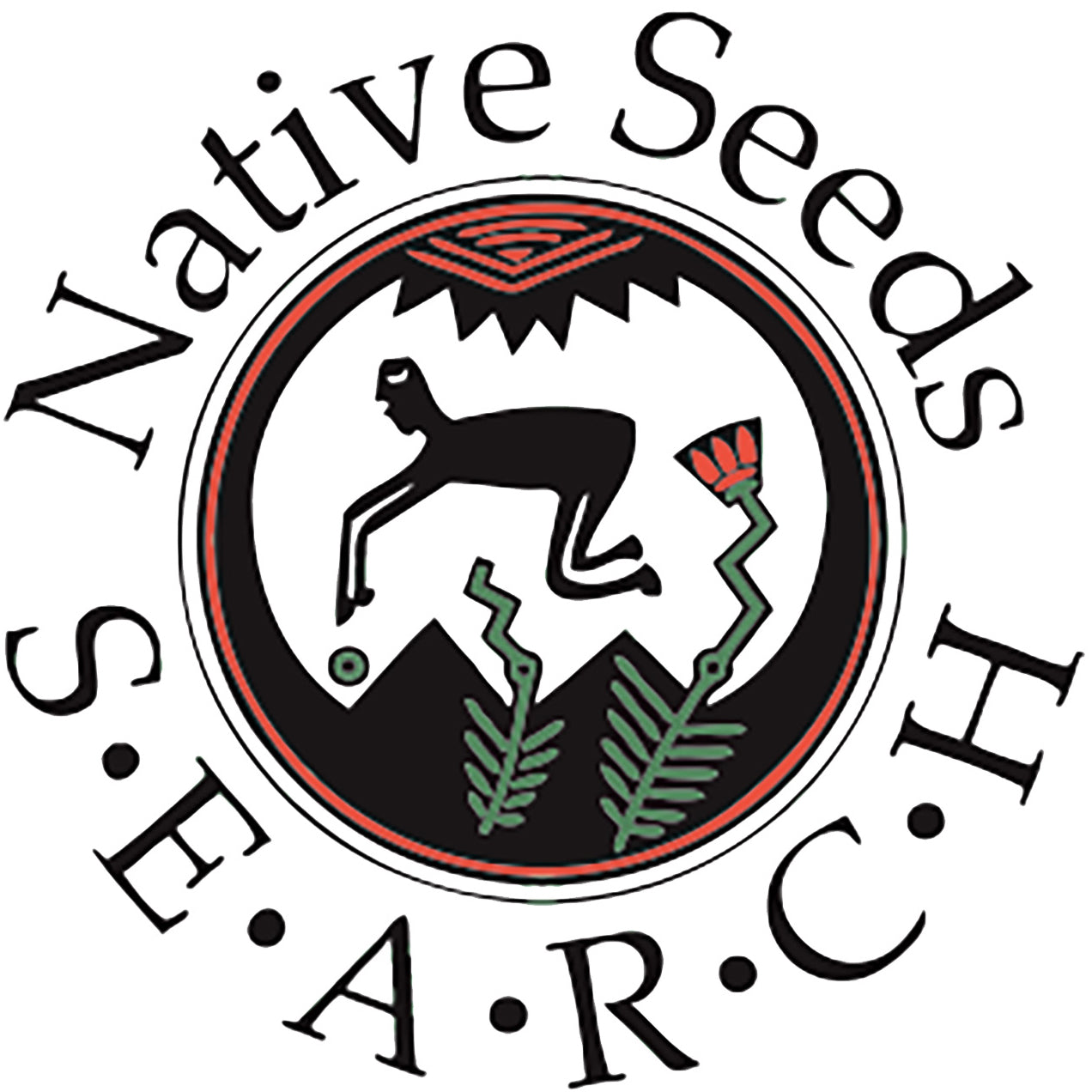
BOTANICAL NAME:
Proboscidea parviflora
LOCAL NAME:
i:hug or ‘ihuk (O’odham); basket claw
COLLECTION SITE:
Santa Rosa Village, Tohono O’odham Nation, Pima County, Arizona
COLLECTION DATE:
1978
HISTORICAL ORIGINS:
Devil’s claw is believed by the Tohono O’odham to have been brought into existence at the same time as humans. In their creation story, I’itoi, the Great Spirit, gave each tribe a basket on the third day. So that each group would be able to tells its baskets apart, I’itoi gave to the people ‘ihuk, and showed them how to weave its fibers into designs in the baskets. Devil’s claw remains have been found in caves in the Southwestern United States, whose contents date from 300 AD, and basketry made in 600 AD in Arizona’s Gila River Watershed was discovered to contain devil’s claw splints. Devil’s Claw grows wild throughout the Americas. It is debated exactly when domestication occurred because archaeological evidence is scarce, but devil’s claw is believed to have been first cultivated in the Southwest by the Hohokam a thousand years ago, with groups such as the Tohono O’odham and Pima actively growing it today.
CULINARY USES:
The peeled root is consumed as a staple food by the Seri from the Gulf of California. The immature pods can be blanched and the seeds are eaten. Devil’s claw is used for food and basketry by many groups including the Apache, Yaqui, Pima, Tohono O’odham, Cahuilla, Yavapai, Hopi, Shoshone, Tarahumara among others. Some taboos on eating the seeds evolved when wild devil’s claw became endangered. For example, Pima girls were discouraged from eating the seeds as it was said that this would cause them to bear only sons.
NUTRITIONAL BENEFITS:
The seeds of devil’s claw are rich in oil and protein.
MEDICINAL USES:
Devil’s claw is sometimes used as a remedy for symptoms of arthritis.
CRAFT USES:
The dried claws provide a strong, pliant fiber, which is soaked in water and striped into long strands used to construct baskets to provide black color. Basketmakers often process and store the claws out of the sun and treat with ashes to preserve the black color. Baskets have many utilitarian uses but they are also highly priced art.
SOCIO-CULTURAL IMPORTANCE:
Women most likely domesticated Devil’s claw as they are historically the primary basket weavers among contemporary groups such as the Tohono O’odham. Wild devil’s claw that produce bigger claws are preferred by basket weavers and the longer claws are easier to weave. Bigger claws come from plants which have white seed, compared to the more common black-seeded variety. The introduction of ranching into the Southwest drastically impacted the availability of wild devil’s claw, so women began to collect the white seeds, sowing them around men’s plots of corn, beans and squash. The best seeds were saved and traded with other groups. Devil’s claw is now used by many Native American basket makers, and while similarities in design may be identified within a tribal group, each artwork is unique to the spirit of its creator. As the Tohono O’odham say, women dream their baskets before they make them, weaving their own stories to life.
CULTIVATION TECHNIQUES:
Devil’s claw grows wild throughout the Sonoran desert of Arizona, but is also successfully cultivated in this area with minimal irrigation. It responds well to the heat and moisture of the summer monsoon season. When the claws mature, they split into two long claws with a curved shape. In the wild, the claws often catch a ride on coyotes as the claw has a sharp point and curved shape.
REFERENCES:
Dahl, Kevin (2006). Tucson, AZ: Western National Parks Association.
Nabhan, Gary Paul. (1985). Gathering the Desert. Tucson, AZ: The University of Arizona Press.
Nelson, Suzzane (2002). Hooked on Devil’s Claw.
